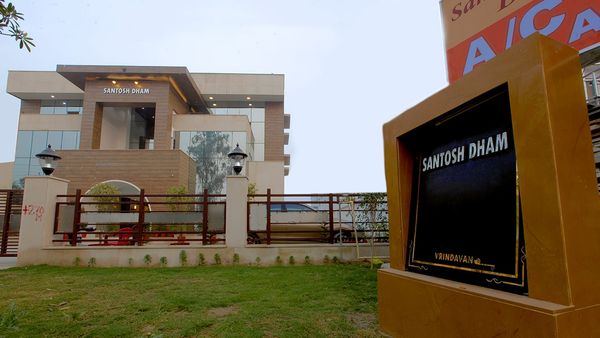Uttarakhand’s Oldest Mountain Trails: More Than Just a Trek
 Ashish Rawat
14 Aug, 2025
12 mins read
71
Ashish Rawat
14 Aug, 2025
12 mins read
71

Trekking in Uttarakhand is a journey into both nature and history. Many of its mountain paths have existed for centuries, serving as lifelines between remote valleys, high passes, and sacred shrines. Long before they were known to modern trekkers, these trails were walked by shepherds moving their flocks to high pastures, traders carrying goods between India and Tibet, and pilgrims seeking blessings in faraway temples. Each path holds centuries of footsteps, and the stone-paved routes, ancient temples, and traditional villages along the way still echo the past.
These historic trails offer much more than panoramic mountain views. They invite you to experience the deep cultural roots of the Himalayas, passing through settlements where time seems to stand still. The rhythm of life here is shaped by the seasons, the snowmelt, and the ancient bonds between people and the mountains. Walking them is like turning the pages of a living history book, where every bend of the trail reveals a new chapter of legends, traditions, and survival.
1. Har Ki Dun Trail
The Har Ki Dun trail, known as the “Valley of the Gods,†has been a vital route for generations of villagers, linking the Tons River valley with the secluded settlements of Osla and Seema. According to local belief, it was once used by the Pandavas during their journey to heaven, adding mythological weight to its beauty. The trail weaves through terraced fields, pine and deodar forests, and rivers fed by melting snow, all while offering glimpses of wooden houses carved in a style unchanged for centuries.
Even today, the Har Ki Dun valley thrives as a living heritage corridor. The people here still follow age-old agricultural practices, and their traditions remain closely tied to the land. As you walk, you see not just the grandeur of Swargarohini peaks but also the everyday life of a Himalayan community that has relied on this path for trade, communication, and cultural exchange for generations.
2. Kuari Pass Trail
The Kuari Pass trail is one of Uttarakhand’s most historic high routes, once favored by traders and explorers seeking a safe passage between the Chamoli region and the Nanda Devi area. The British viceroy Lord Curzon famously trekked here in the early 1900s, which is why it’s sometimes called the “Curzon Trail.†Thick oak and rhododendron forests give way to vast alpine meadows, each bend opening up new vistas of Himalayan giants like Nanda Devi, Kamet, and Dronagiri.
But Kuari Pass trek is more than a photographer’s dream it’s a thread that has bound valleys together for centuries. Shepherds have long moved their flocks across this pass, and its position as a relatively gentle crossing made it a lifeline during times when snow blocked other routes. Walking here connects you with a tradition of seasonal migration, trade, and exploration that continues to shape the cultural landscape of the Garhwal Himalayas.
3. Pindari Glacier Trail
The Pindari Glacier route in Kumaon was once a bustling trade artery linking India and Tibet. Generations of Bhotia traders carried salt, wool, and grain across high passes, stopping at resting points that still exist today. The trail is marked by river crossings, deep valleys, and the distant roar of the Pindar River, which guides you toward the glacier. Along the way, the remnants of stone shelters speak of a time when this was a vital economic lifeline.
Today, the trade has vanished, but the history remains alive in the villages along the way. Many homes still bear the traditional Kumaoni architecture, and locals share stories of journeys their forefathers made along the same path. Trekking here is an immersion into this shared past, blending raw Himalayan beauty with a sense of walking in the footsteps of countless travelers who came before.
4. Milam Glacier Trail
The Milam Glacier trek traces one of the most important historic trade routes in the Kumaon Himalayas. Before the 1962 Indo-China conflict closed the border, mule and yak caravans traveled this route to Tibet, carrying everything from textiles to medicinal herbs. The trail passes through the Johar Valley, where stone-built villages like Martoli and Burfu still stand as silent witnesses to the trade era.
Although many villages are now seasonally inhabited or abandoned, their old houses, with carved wooden windows and slate roofs, remain frozen in time. The glacier itself is a dramatic spectacle, but the real treasure is the deep cultural imprint left by centuries of movement along this path. It’s a journey where the echoes of yak bells seem to follow you long after you’ve left.
5. Roopkund Trail
The Roopkund trek is one of the most mysterious and historically rich trails in Uttarakhand. At its end lies the Skeleton Lake, where human remains dating back centuries have been found, believed to be linked to an ancient pilgrimage or tragedy. This trail is also part of the Nanda Devi Raj Jat Yatra, a once-in-12-years pilgrimage deeply rooted in local culture.
The route’s stone steps, lush bugyals, and high ridges carry not only stunning scenery but also a spiritual significance. Villagers still join the yatra in traditional attire, retracing the path their ancestors walked. For trekkers, this means experiencing both a physical challenge and a deep connection to a centuries-old cultural tradition.
6. Auden’s Col Route
Auden’s Col is famed today as one of India’s toughest treks, but it was originally explored and documented in 1935 by British surveyor John Bicknell Auden. The route connects Gangotri and Kedarnath valleys, passing through remote glaciers and high ridges that have long been used by shepherds and wandering ascetics.
Crossing Auden’s Col is like stepping into the raw heart of the Himalayas—untamed, vast, and largely unchanged by human hands. Its isolation and difficulty have preserved its historic character, making it a trail that embodies the spirit of exploration and survival in the high mountains.
7. Kafni Glacier Trail
The Kafni Glacier trek, though less famous than its Pindari counterpart, has its own historic charm. For generations, shepherds and villagers have used this path to move livestock and goods between valleys. The trail meanders through rhododendron forests, high meadows, and rustic hamlets before opening to the glacier’s icy expanse.
What makes Kafni special is its quiet authenticity. Without large trekking crowds, the route retains a sense of how it must have felt decades ago—peaceful, remote, and closely tied to the cycles of the land. Locals still recall how the glacier once marked an important seasonal destination for grazing animals.
8. Nanda Devi East Base Camp Route
Before restrictions on entering the Nanda Devi Sanctuary, this route to the eastern base camp was part of ancient pilgrimage and shepherding circuits. The Johar Valley through which it passes was once alive with trade, and its villages still hold the charm of stone houses and narrow lanes.
Standing at the base camp, facing the towering Nanda Devi East peak, you understand why generations have revered this mountain. The journey here is not just physical—it’s also spiritual, echoing the deep respect that locals have for this sacred landscape.
9. Bali Pass Trail
Bali Pass is a high-altitude connector between Yamunotri and Har Ki Dun valleys, used historically by shepherds and villagers for seasonal movement. The trail challenges you with steep ascents, snow crossings, and breathtaking ridges, making the crossing feel like an initiation into the mountain world.
In earlier times, it served as an important cultural bridge between two valleys that shared trade and traditions. Even today, when you reach the top and see both valleys spread out below, it’s easy to imagine how vital this link once was.
10. Satopanth Tal Trail
The Satopanth Tal trail leads to a triangular glacial lake near Badrinath, revered for its religious significance. For centuries, sages and pilgrims have made this journey, believing the lake to be blessed by the trinity of Brahma, Vishnu, and Mahesh.
The route passes glaciers, high ridges, and landscapes that feel untouched. Walking here is like entering a sacred zone, where every rock and ripple seems to hold a story. The combination of spirituality and raw mountain grandeur makes this one of Uttarakhand’s most enduring historic paths.
Conclusion
These trails are more than trekking destinations they are living connections to Uttarakhand’s past. Each step immerses you in the footsteps of traders, shepherds, pilgrims, and explorers, blending the thrill of adventure with the weight of history. Walking them means joining a tradition that has lasted for centuries and will endure for many more.
Written By:
Ashish Rawat



Hotels at your convenience
Now choose your stay according to your preference. From finding a place for your dream destination or a mere weekend getaway to business accommodations or brief stay, we have got you covered. Explore hotels as per your mood.


